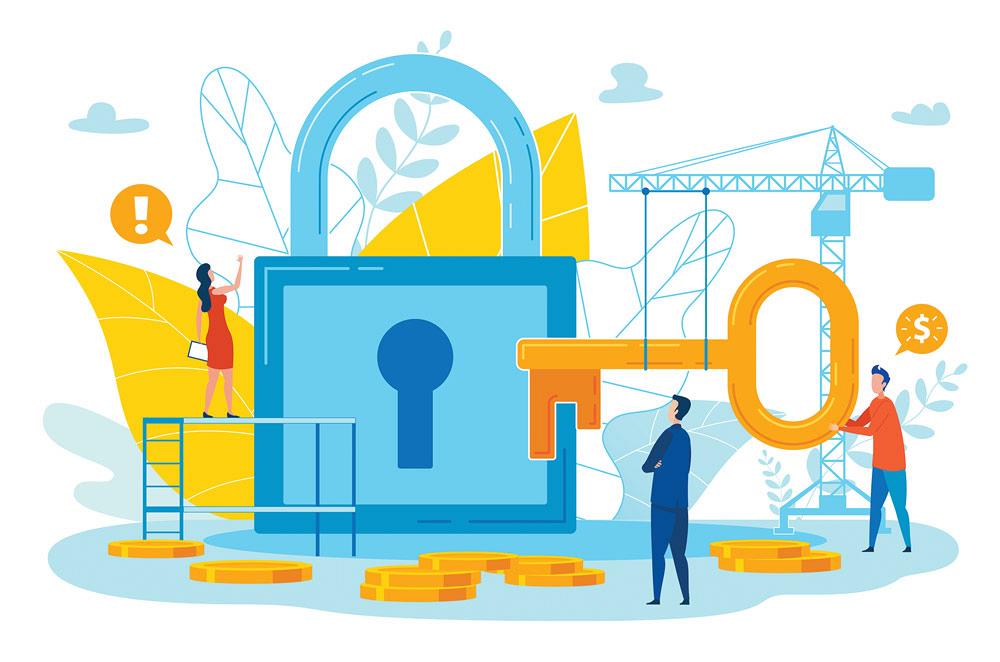Vice-President
- FMA
- The Fabricator
- FABTECH
- Canadian Metalworking
Turn to leasing for your turnkey project
A lease can help shops protect cash flow while still keeping up with technology trends
- By Ken Hurwitz
- July 28, 2021
Implementing a turnkey manufacturing system can have a large impact on a shop because of how the financing transaction affects cash flow.
When I started in this industry in the early 1990s, I worked for my family’s business importing and distributing Japanese machine tools. To be successful selling high-end equipment, we had a full complement of service technicians and application engineers to support our sales staff and customers.
We mostly sold stand-alone machine tools, but there were many times when large manufacturers, particularly in the automotive sector, wanted us to supply them with complex, multi-machine turnkeys. The term turnkey refers to something that is ready for immediate use with the turn of a key.
For us this meant our customers were looking for a machining cell that was capable of complete-part creation, as well as some design work and programming of the part, automation, fixtures, and tooling. When you consider the scope of work required to supply such a service, I can tell you from first-hand experience that it is considerable, and the costs are high.
How to Pay
A big issue when purchasing these complete systems is the terms of payment. Typically, the first requirement is a large deposit (often as high as 30 per cent of the purchase price) at the time of order to cover the seller’s commitments for all of the equipment, tooling, and accessories required to make the system operational because those suppliers also often require deposits.
After the deposit is received, the engineering work can begin. This stage includes program preparation, drawings, and system design. Once this work is completed, the buyer is then charged another 30 per cent upon design approval.
The next step is to assemble the system and organize a full runoff for the system’s buyer to demonstrate that it can manufacture finished parts within the agreed parameters (cycle time, part tolerances). Once the runoff is completed and accepted, another invoice of 30 per cent is issued. The final 10 per cent is payable once the system is delivered on the buyer’s shop floor.
The relevant point to note here is that 90 per cent of the cost of the system is paid before the buyer makes a single part.
Why Finance?
One of the reasons that machinery buyers choose to finance their machine purchase, whether they are working with their own bank or with their preferred alternative lender, is to protect cash flow (working capital).
Busy manufacturers have many uses for their working capital, including tooling and consumables, material, and wages. In addition, manufacturers often have customers that may or may not pay on time. Then when it comes time to add a piece of new machinery, or an entire system, pulling money from working capital sometimes isn’t practical.
It can be a long time between the manufacturing equipment hitting the shop floor and parts being finished and paid for.
However, if the system is financed instead of being purchased outright, the transaction essentially is “pre-funded,” meaning it’s the lender that makes the large down payment installments to the machinery seller instead of the buyer. The buyer only has to start a lease with the lender and make the regular monthly payments.
How It Works
A real-world example comes from a good client of mine who bought two CNC lathes with automation that included a robot to load/unload parts along with a conveyor system.
Once we had a lease approval in place, we (as the lender) paid the deposit and started the lease. The total cost of the system was approximately $300,000 and the monthly payments were about $5,000.
As the lender, we made the large payment installments to the equipment seller at the design approval stage, at the runoff stage on the seller’s floor, and at the runoff stage on the buyer’s floor. During this time, the buyer only had to pay the lease’s regular monthly payments.
The time from when the order took place to the delivery time was about five months, so the buyer made only five monthly payments totalling $25,000. This was much easier for them to manage when you consider that the deposit alone would have been $90,000. It was a good deal for the buyer.
There is no doubt that, regardless of size, many manufacturers struggle with cash flow and therefore must explore every avenue to invest in new equipment without having to pull money from working capital.
Starting a lease, even for complex turnkey systems, is one way to help accomplish this.
Ken Hurwitz is vice-president, Equilease Corp., 416-499-2449, ken@equilease.com, www.equilease.com.
subscribe now


Keep up to date with the latest news, events, and technology for all things metal from our pair of monthly magazines written specifically for Canadian manufacturers!
Start Your Free SubscriptionAbout the Author

Ken Hurwitz
41 Scarsdale Road Unit 5
Toronto, M3B2R2 Canada
416-499-2449
- Trending Articles
Modest manufacturing growth appears likely

There’s no business like show business

Tighitco, DCM Group Aerospace join forces on Airbus A220 program

Software automatically identifies vulnerable production assets

NAIT names Sandvik Coromant the 2024 Distinguished Industry Partner

- Industry Events
MME Saskatoon
- May 28, 2024
- Saskatoon, SK Canada
CME's Health & Safety Symposium for Manufacturers
- May 29, 2024
- Mississauga, ON Canada
DiPaolo Machine Tools Open House 2024
- June 4 - 5, 2024
- Mississauga, ON Canada
FABTECH Canada
- June 11 - 13, 2024
- Toronto, ON Canada
Zoller Open House & Technology Days 2024
- June 12 - 13, 2024
- Ann Arbor, MI
















